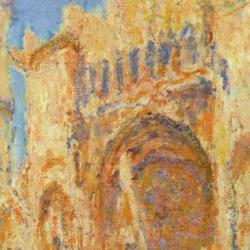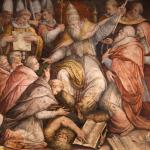It sure seems that the story of Joseph is a typological foreshadowing of the life of Jesus. Joseph is hated by his brothers; turned over to Gentiles; falsely accused; thrown into pit and prison; raised up, finally set on a throne, from which he gathers and distributes bread.
Of course, there are plenty of discontinuities too: Joseph’s story takes place in Egypt; he doesn’t actually die and rise again; he sits on a throne in a well-known ancient empire; he institutes a forced savings program to hedge against the coming famine, and distributes bread to those who can pay for it.
To see the Joseph story as a type, we have to abstract a formal pattern from the concrete events of the narrative. What’s similar isn’t the details. What’s similar is the overall shape of the narrative, and the shape of specific moments in the narrative. The similarity to the gospel story is evident only if we make a Proppian structural move that captures a common morphology.
Is this abstracting process legitimate? Is this hermeneutically justifiable?
I think it’s not only justifiable, but necessary, if we are to acknowledge the reality of typology at all. After all, every antitype differs in numerous specifics from the type; no Old Testament foreshadowing is the same in every respect as the story of Jesus. It couldn’t be.
When Paul talks about types, he is engaged in something like this structuralist abstraction. The events of the exodus are types for our instruction. Israel crosses the sea, receives water and manna, yet some fail to believe and fall in the wilderness. So also: Christians have been baptized, receive spiritual food and drink, yet must trust the Father who raised Jesus if they want to get to the promised land. Christians don’t pass through the Red Sea; Eucharistic bread doesn’t fall from heaven or congeal on the ground after the dew; Eucharistic wine does not flow from a large piece of granite. What’s common is the form; a pattern of events has a shape that is replicated in the rites and life of the church.
Now, once we recognize that the biblical imagination includes this process of abstraction a, then we can tease out similar patterns. We can conclude that Joseph’s story is a type of the gospel, even though the New Testament never tells us as much. And we can tease out liturgical patterns from the sequence of sacrificial offerings. And perhaps we can discern Trinitarian patterns in creation and history.
Scripture seems to encourage this sort of pattern-recognition, and to call it wisdom.













